
At first glance you wouldn’t consider them to be potential college athletes. They practice on Friday and Saturday nights. They play with a mouse and keyboard instead of balls or cleats. They wear hoodies and jeans instead of pads and helmets. In fact, most of them don’t even refer to themselves as athletes.
These are eSports players, a community of gamers who don’t look like traditional athletes, but share many of the revered qualities of athletics such as teamwork, strategy, dedication, and of course, an intense, competitive passion to defeat their opponents. Regardless of whether or not you believe competitive video games are worthy of being called sports, one thing is undeniable: they have quietly thrived on college campuses for years, and within the last year have seen more growth than ever before.
During the span of one year, two U.S. universities have recognized their eSports organizations as varsity sports, the number of collegiate teams has nearly doubled and more scholarship money is set to be awarded this year than ever before.
The largest of these eSports is the video game League of Legends. The free-to-play title pits two teams of five players against one another. The objective is simple: destroy the opposing team’s base. But much like the simple objectives of football and basketball, defeating your opponents is anything but simple. League of Legends’ complexity and large capacity for mastery of its gameplay has resulted in an average of 27 million people playing it every day. It is by far the most popular eSports on the planet.

Joy Johnston plays League of Legends with other members of the Electronic Gaming League.
Student Katie Braman plays League of Legends regularly and doesn’t believe that the lack of physicality should prevent people from recognizing it as a sport.
“Look at the definition of a sport, it meets all the requirements,” Braman said. “From what I have seen from eSports, it is extremely competitive and the fan base is just as strong as regular sports.”
This passion for competitive gaming draws members of the Ball State University Electronic Gaming League to congregate every Friday and Saturday evening to play games like League of Legends for hours on end. During the week, the Student Center’s computer lab is a place to take quizzes and tests, but once the weekend arrives the lab transforms into a digital battleground for 30 to 40 students.
The faint clicks of mice and the clacking of keyboards is the only constant sound that fills the air. Talk is sparse and is mostly reserved for calling out in-game play actions or cracking jokes. It’s surprisingly quiet for a room with so many people, but the silence serves as a testament to the intensity of the game, and the high-level concentration that it demands from those who play it.

From bottom to top: Maggie Flynn, Kenneth Duncan, and Ryan Walton.
EGL’s Vice President Brad Hughes has been playing League of Legends since its first season in 2011. He says that teamwork and strategy are the strongest similarities between League of Legends and traditional sports.
“Sports have always been physical, but we’re using a lot of brain power just to figure out these things,” Hughes said. “It can be a huge mental game. It can be really stressful, and it can actually really tire you out.”
What eSports athletes lack in physical strength and cardiovascular endurance they make up for with dexterity and multitasking. Real time strategy games such as Starcraft require players to handle a large amount of multitasking, resulting in a flurry of mouse and key inputs. Most professionals register about five, six, or even seven key inputs every second. Such speeds are faster than most people are able to type words, and these professionals do it for the entirety of 30-60 minute-long matches.
Like traditional athletes, eSports players often experience their athletic prime during their young adult years. Along with the competitive nature of these games, their demand for razor-sharp cognitive skills and the immense popularity of video games among young people make eSports a natural fit for any American university.
Two universities have already expressed their beliefs that eSports are worth investing in and have granted varsity sport status to their League of Legends teams.
Last year, Robert Morris University in Illinois became the first U.S. school to include eSports in its athletic program. Then, in early January, University of Pikeville in Kentucky announced their plans to build an eSports varsity team during this year’s upcoming fall semester. Both eSports teams play League of Legends exclusively.
The student athletes adhere to the same rules and responsibilities as their traditional counterparts. Pikeville’s media director, Bruce Parsons, said that they must meet minimum GPA requirements, attend scheduled practice times, and even watch footage of other teams playing in order to learn their strategies. In return, they receive scholarships. The 35 members of the Robert Morris team have half of their tuition and room and board paid for by the university. Pikeville plans to offer 20 scholarships, but has not released their amounts.
Before eSports splashed onto the college scene there were only professional leagues, and just like collegiate leagues the pros have seen nothing but growth in the last several years. In 2014, more than 71 million people around the world watched eSports according to SuperData Research. The U.S. was home to 31.4 million of them, and the entire audience was twice the size it was in 2013.
Making the leap to the professional leagues isn’t an ambition reserved to “sportsball” players. For many of these collegiate eSports players, the dream of making it to the major leagues is more tangible than what traditional athletes are used to.
Instead of waiting for major league games to air a few times a week, eSports fans can frequently tune into their favorite pro players. Since the pros practice for 12 hours or more each day, they often broadcast themselves for fans to view. This enables them to interact with their fans more, as well as earn a consistent salary so long as people continue to tune into their channels.
Hughes says that most of the streamers explain their strategies and tactics, providing a public teaching session of sorts. The largest of these streaming services is Twitch.
“I’m definitely a huge fan of Twitch,” Hughes said. “I definitely learn a lot from watching streamers and I’m definitely huge into the eSports scene so I always follow the professional players just like other people follow football players.”
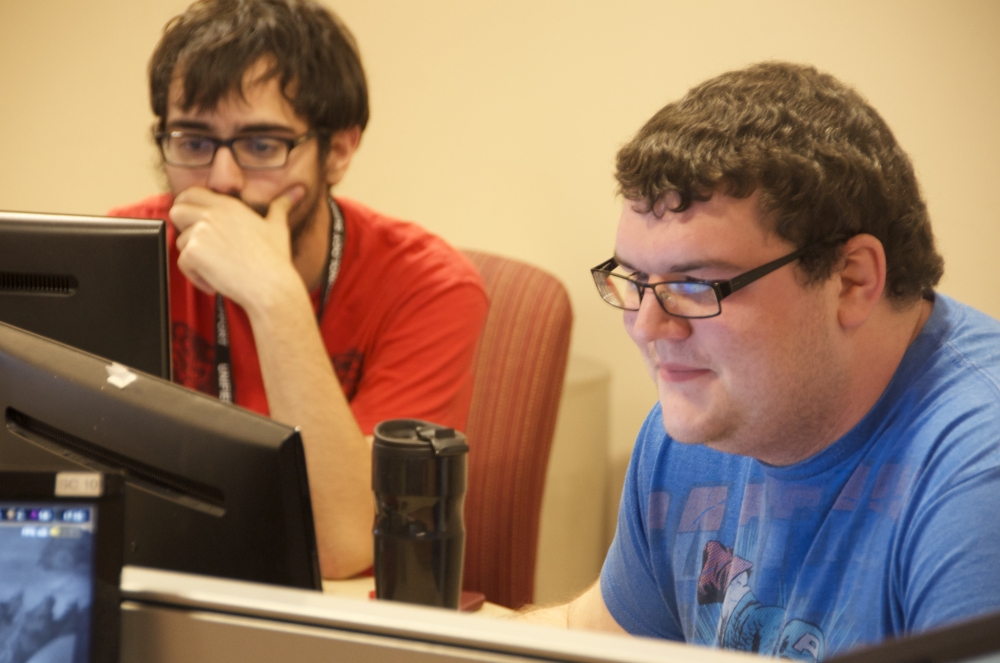
Brad Hughes (right) and Austin Graham DeArmond (left).
Players who are ranked moderately high in the community and have a little luck can even get the chance to play with pro players. Hughes recalls a few instances where he got to play with famous players who he had previously only been able to spectate in broadcasted pro matches.
“It’s really cool that the people you always watch will play with you,” Hughes said.
The fact that eSports fans can interact with their favorite professionals has likely contributed to the growth of the collegiate eSports scene. As the first varsity eSports team, RMU solidified the aspirations of collegiate players everywhere when their star player, Adrian Ma, dropped out after one month after being offered a contract to join a professional team.
It’s no coincidence that the number of professional eSports players and the number of collegiate eSports teams in the U.S. have both starkly risen in the last year. Many of these collegiate players have hopes of making it to the big leagues, and being able to watch professionals play every day makes the dream all the more believable.
Despite the decisions of two universities to recognize the athleticism of League of Legends, these schools are the outliers of the collegiate eSports scene. Various online leagues allow players to compete in tournaments every day, but the largest collegiate organization is StarLeague.
More than 10,000 students from 450 schools are currently competing in the second season of the North American Collegiate Championship which began in early January. The league’s membership saw an increase of 4,400 students and 260 schools within the last year.
The first season of the North American Collegiate Championship resulted in $100,000 in scholarships being awarded, with the members of the championing team receiving $7,500 each. There’s no word on how large the pool will be this season, but the winning portion of $7,500 will be increased to $30,000. This collegiate eSports growth has also been reflected in Indiana schools, and they’re quickly expanding.
IUPUI is currently the only university in the state that’s registered in StarLeague, but according to Jeff McDaniels, the president of the Electronic Gaming League, a tournament will be held for Indiana schools at the end of March. There hasn’t been any confirmation of scholarships in the prize pool, but Riot Games, the developer of League of Legends, will be giving away in-game currency and exclusive champion skins to the winners.
Ball State University, Indiana Tech, Indiana University, IUPUI, and IPFW will all be competing in the tournament.
Collegiate eSports don’t show any signs of slowing down, and is actually one of the few aspects of eSports where the U.S. excels compared to South Korea.
Arguably the birthplace of eSports, South Korea has embraced computer gaming as a national pastime. And just like smartphones and high-speed internet, they did it years before western countries.
But while South Korea has more gaming cafes, and a greater overall reverence for eSports, they are only just now starting to nationally organize at the collegiate level. The Esports Collegiate Club Association began in early 2014, and by September had 50 universities under its fold, quickly becoming the South Korean equivalent of StarLeague.
South Korea is still the undisputed epicenter of the world of eSports, but it’s collegiate institutions aren’t the only area where the U.S. is outpacing them. There are 2,754 professional eSports players living in the U.S. according to e-Sports Earnings. That’s more than any other country, and is more than twice the amount of South Korea’s 1,142 professionals.
America is starting to give the world a run for its money when it comes to embracing eSports, and it’s beginning to reflect in more conventional ways. South Korean stadiums have been packed with eSports events for years, but has only recently been a trend in the U.S. The 2013 League of Legends World Championship was held in Los Angeles’ Staples Center. Within the first hour of being on sale, tickets for the event sold out, proving that eSports events can pack stadiums outside of South Korea.
Even the U.S. government has gotten its hands in incentivising eSports businesses and athletes. The U.S. government began granting major league competitor visas for foreign eSports players back in 2013. Before that, players from outside the U.S. could only stay for limited time, or had to obtain a celebrity visa.
Esports is still a fledgling athletic institution and there’s plenty of room for growth. A substantial portion of that growth will likely come from the U.S. thanks to the continually expanding collegiate eSports scene, from the varsity League of Legends teams, all the way to the small student organizations that play just for fun.
Back in the computer lab turned digital arena, Hughes admits he has no delusions of becoming a professional player of any game. He doesn’t play for fame or money. He plays because it’s an enjoyable experience with friends.
“It’s no fun playing by yourself.” Hughes said. “Sometimes I’ll get on and none of my friends will be on, so I don’t play.”
Hughes has competed in roughly 10 tournaments with friends, and recalled the first one as being the most exciting. A friend convinced him and others to enter a tournament that was organized to raise money for video game themed supply drops for deployed troops. Their team made it to the finals and a famous streamer by the name of “Trick 2g” anchored all the matches. Since it was the finals, more than 10,000 people watched the match, all the while, one of his favorite streamers narrating it play-by-play.
“It was pretty nerve-wracking but we ended up winning, just barely,” Hughes said.
Like many gamers, his setup in the computer lab is tried and true. A few Pepsi cups rest to the side of his keyboard. Since it’s Saturday, the Late Nite program provides him and the others with free spaghetti and bread sticks to eat throughout the night.
The meals aren’t usually eaten all at once though. There’s no time for that. Hughes’ teammates in the lab are urging him to hurry up and jump into another match with them. There’s always one more game to play.

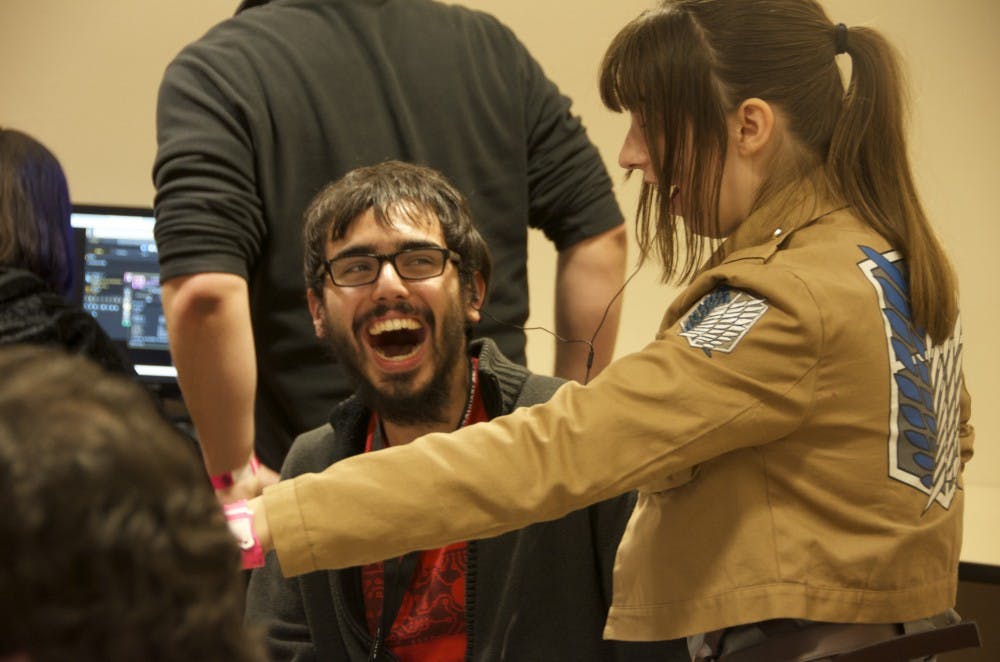
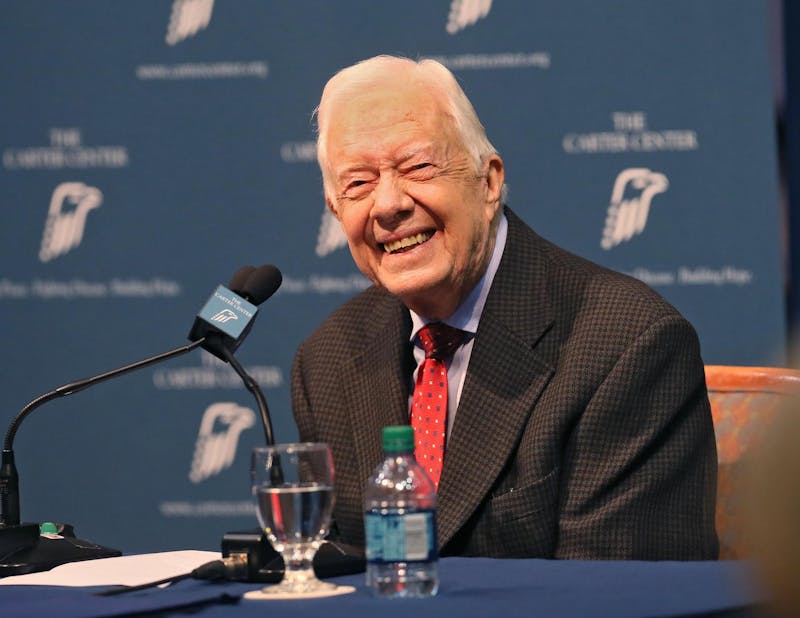
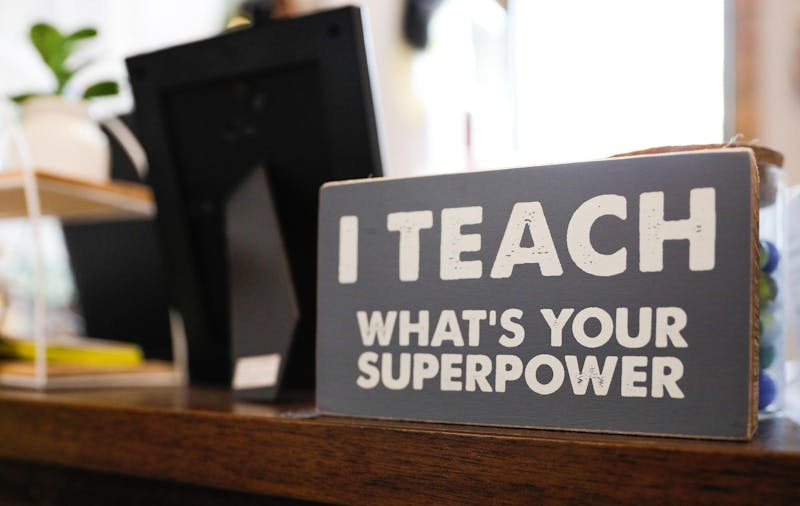
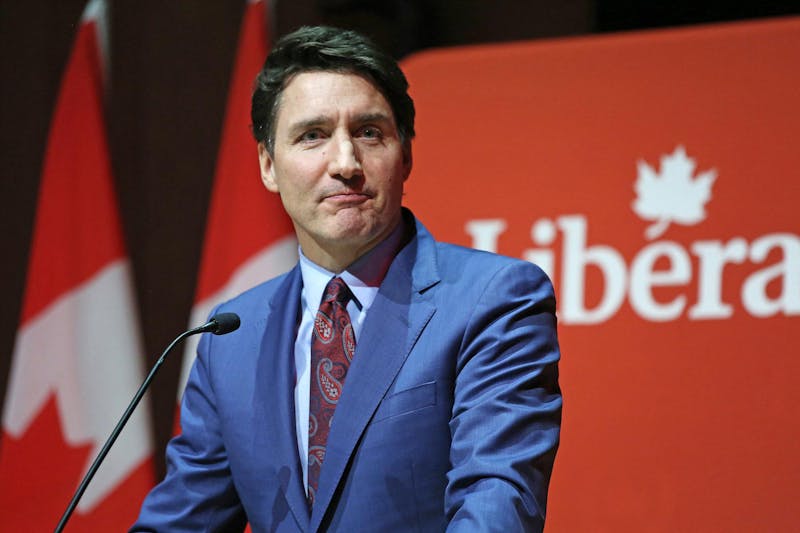
The Daily News welcomes thoughtful discussion on all of our stories, but please keep comments civil and on-topic. Read our full guidelines here.